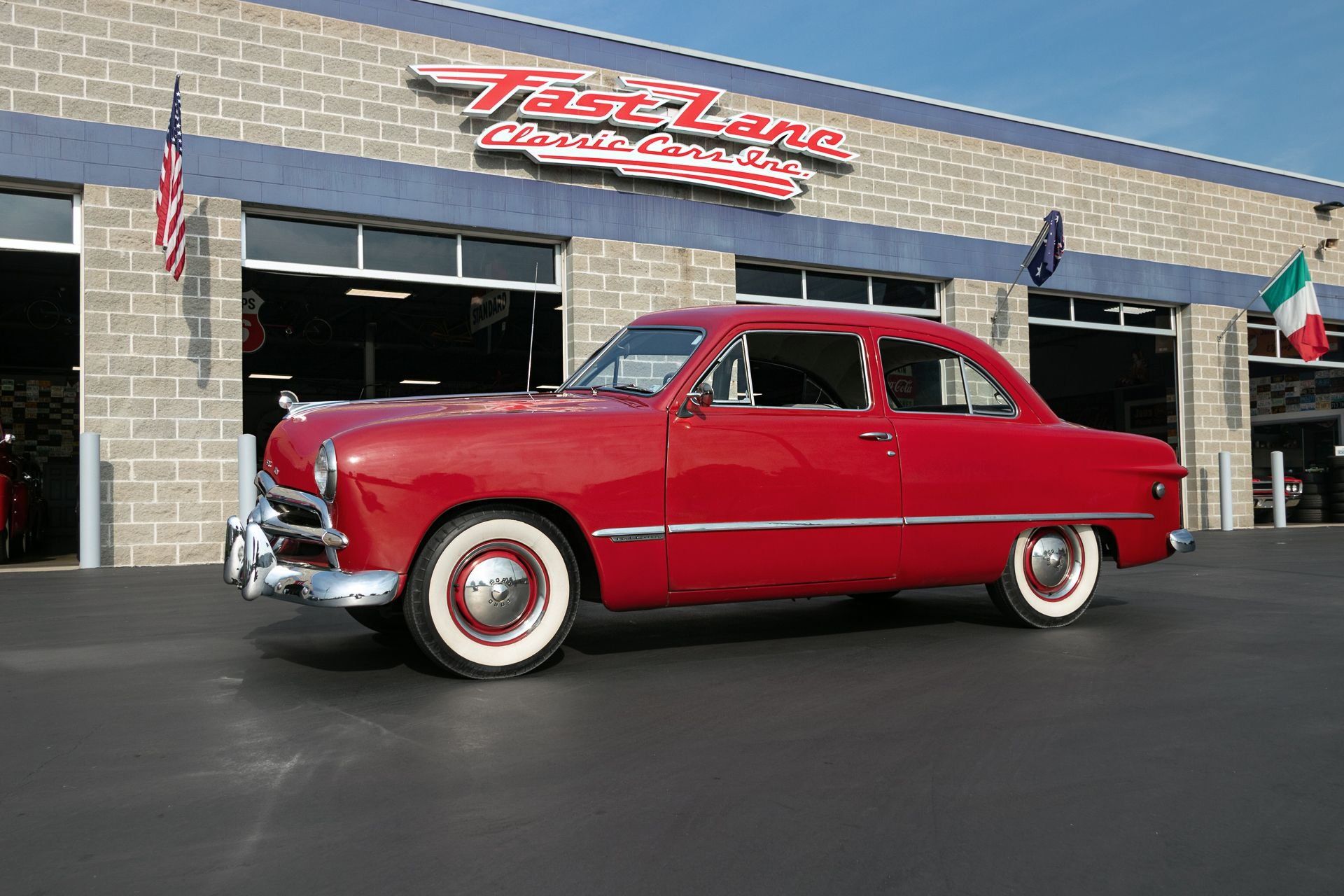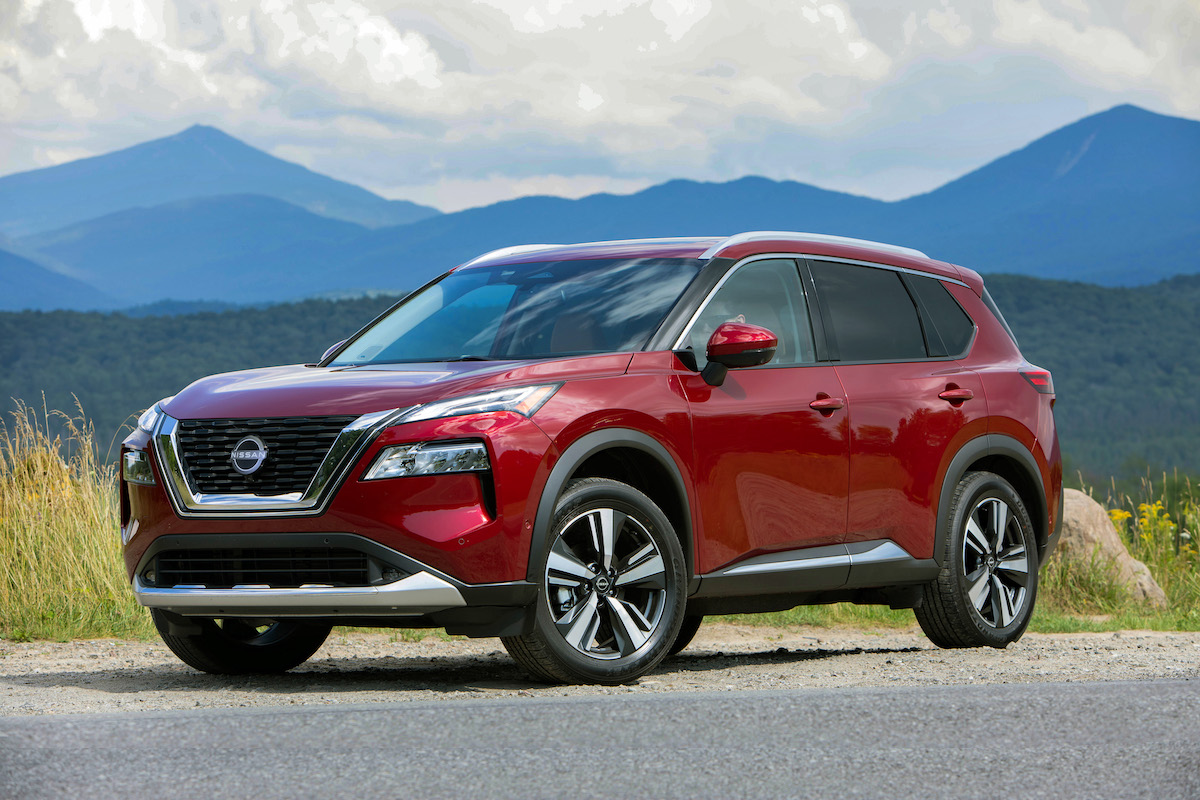
Ever booked a rental car online, only to be baffled by a cryptic code like “CCAR” or “IFAR”? Or perhaps you’ve glanced at your vehicle registration and wondered what that “Class Code” really means? You’re not alone in facing this labyrinth of automotive terminology. Many people find navigating the world of vehicle classification codes confusing, whether it’s for renting a car, registering a vehicle, or understanding insurance premiums, often feeling like they need to decipher a secret language just to comprehend the type of vehicle they are dealing with.
Yet, far from being mere bureaucratic jargon, these vehicle class codes form a foundational language, a complex lexicon that underpins the entire automotive ecosystem. They are standardized systems, often employing specific formats, used by a diverse array of entities—from rental companies and government agencies to insurers—to categorize vehicles based on key attributes like size, type, transmission, fuel, weight, or usage. This intricate architecture ensures consistent descriptions across various platforms and aids in efficient administration, bringing order and clarity to the vast and diverse world of automobiles.
Understanding these codes is not merely an academic exercise; it empowers consumers and vehicle owners by providing transparency. For instance, in the realm of rentals, it means knowing precisely what kind of car to expect, while for registration, it clarifies a vehicle’s official category for legal and taxation purposes. For insurance, it offers insight into the calculations behind premiums. At a broader societal level, these classifications delineate distinct segments within the automotive market, creating implicit categories of vehicles that are treated differently by regulations, design principles, and even public perception, akin to a form of automotive stratification. This article embarks on an in-depth journey to demystify these critical classification systems, focusing initially on the robust frameworks established across North America.
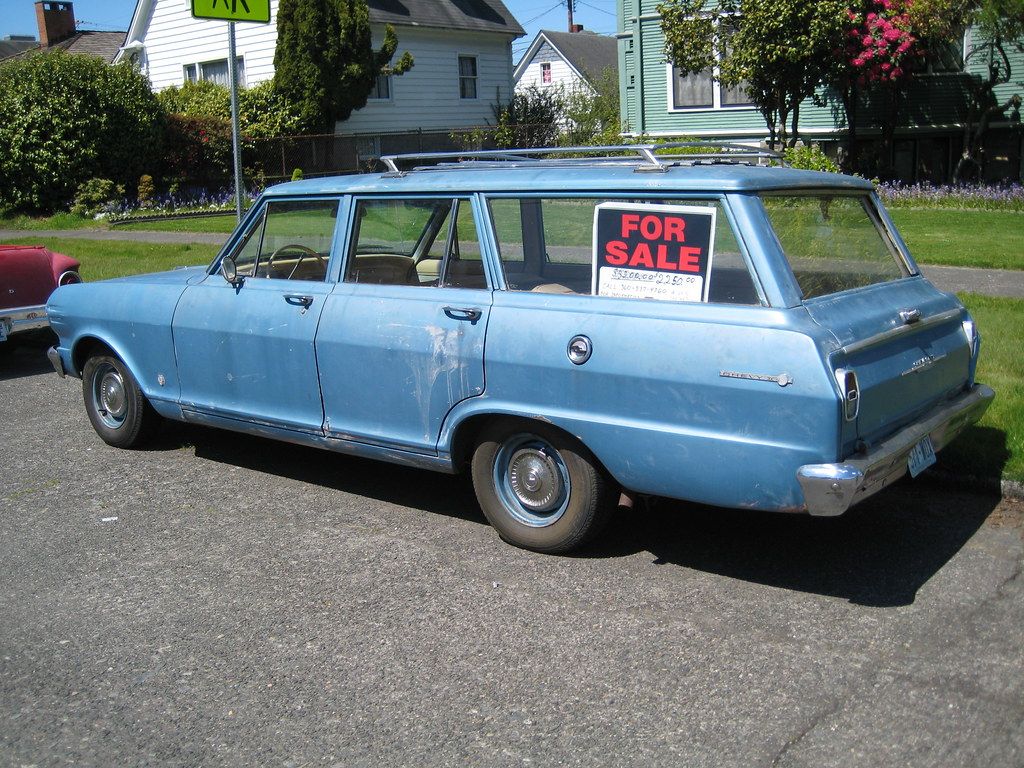
1. **EPA Passenger Car Classification: Defining Interior Volume in the U.S.**In the United States, the Environmental Protection Agency (EPA) plays a crucial role in establishing vehicle classifications, particularly for passenger cars. These classifications are not arbitrary; they are meticulously defined in Federal Regulation, Title 40—Protection of Environment, Section 600.315-08, known as “Classes of comparable automobiles.” This regulatory framework is also transparently presented in the Fuel Economy Guide, making this vital information accessible to the public and industry alike. The primary metric for classifying passenger cars under the EPA system is the interior volume index, which meticulously combines both passenger and cargo volume, offering a comprehensive measure of a vehicle’s practical utility and capacity.
The EPA delineates specific thresholds for these interior volumes, creating distinct categories that range from the smallest to the largest passenger vehicles. These classes include Minicompact cars, defined as having less than 85 cubic feet (2,405 L) of combined interior volume, and Subcompacts, which fall within the range of 85–99.9 cubic feet (2,405–2,830 L). Progressing upwards in size, the Compact class encompasses vehicles with 100–109.9 cubic feet (2,830–3,110 L), while Mid-size cars are characterized by 110–119.9 cubic feet (3,115–3,395 L). Finally, the Large car segment is reserved for vehicles boasting ≥ 120 cubic feet (3,400 L) of interior volume, representing the pinnacle of spaciousness within passenger cars.
This system extends beyond sedans to encompass station wagons, albeit with slightly different volume thresholds that account for their distinct body style and cargo emphasis. Small station wagons are categorized as having less than 130 cubic feet (3,680 L) of interior volume. The Midsize station wagon class ranges from 130–159 cubic feet (3,680–4,500 L), while Large station wagons are those with ≥ 160 cubic feet (4,530 L). These detailed classifications by interior volume highlight a nuanced approach to vehicle categorization, directly influencing how vehicles are perceived in terms of space and practical usability, and by extension, their suitability for different consumer needs.
Moreover, these EPA classifications carry significant regulatory weight. They are instrumental in the calculation of fuel economy and in establishing emissions control standards. By categorizing vehicles based on their size and intended use, the EPA can apply relevant environmental metrics, encouraging manufacturers to innovate within these defined segments. This not only shapes the design and engineering choices made by automakers but also subtly guides consumer expectations regarding vehicle performance and environmental footprint, making the EPA system a fundamental pillar in the automotive landscape of the United States.
The implications of these classifications extend to consumer choices and market dynamics. A car labeled ‘Compact’ by the EPA immediately conveys a certain expectation of space and efficiency, influencing purchasing decisions. This systematic categorization helps to organize a vast and diverse market, providing a common language for regulators, manufacturers, and buyers. It underscores how seemingly technical definitions have broader implications for how vehicles are designed, marketed, and ultimately integrated into American life, contributing to a structured understanding of vehicle “classes” in the national context.
Read more about: Unearthing the Best Factory Muscle Trucks: A Deep Dive into Performance Legends and Their Enduring Legacy

2. **EPA Truck and SUV Classification: Gross Vehicle Weight Rating (GVWR) as the Determinant**Moving beyond passenger cars, the EPA employs a distinct set of criteria for classifying trucks and sport utility vehicles (SUVs), shifting the focus from interior volume to Gross Vehicle Weight Rating (GVWR). The GVWR is a critical metric, representing the maximum permissible total weight of a vehicle, including its chassis, body, engine, fluids, fuel, accessories, driver, passengers, and cargo. This emphasis on weight underscores the distinct functional roles of trucks and SUVs, which often involve heavier loads, towing capabilities, and more robust construction compared to traditional passenger cars. The administrator meticulously classifies these nonpassenger automobiles into several key categories.
For pickup trucks, the EPA establishes two primary classes: Small pickup trucks, which are defined as having a GVWR of less than 6,000 lb (2,700 kg), and Standard pickup trucks, characterized by a GVWR ranging from 6,000–8,500 lb (2,700–3,850 kg). These distinctions acknowledge the varying capacities and intended uses within the pickup segment, from lighter-duty personal vehicles to more capable workhorses. Similarly, vans are categorized into Passenger vans and Cargo vans, both with GVWRs less than 10,000 lb (4,550 kg) and 8,500 lb (3,850 kg) respectively, reflecting their primary function for either people or goods transport.
Minivans, another significant segment, are classified as having a GVWR less than 8,500 lb (3,850 kg). A notable development in the EPA’s classification system occurred starting in the 2013 model year, when SUVs were further refined and divided into Small sport utility vehicles and Standard sport utility vehicles. Small SUVs possess a GVWR of less than 6,000 lb (2,700 kg), while Standard SUVs fall within the 6,000–10,000 lb (2,700–4,550 kg) range. This segmentation for SUVs reflects their growing diversity and the need to differentiate between more compact, car-like crossovers and larger, more rugged traditional SUVs, indicating an evolving understanding of these vehicle types within the regulatory framework.
Furthermore, for product lines offering multiple GVWR options less than or equal to 8,500 pounds, the EPA establishes a characteristic GVWR value by calculating the arithmetic average of all distinct GVWRs available for that particular line. This nuanced approach ensures fairness and consistency in classification, even when a single model might have variations in its load-carrying capacity. The system also includes a category for Special purpose vehicles, which encompasses all automobiles with a GVWR less than or equal to 8,500 pounds and all medium-duty passenger vehicles possessing unique features that warrant a separate classification from typical automobiles. This demonstrates the EPA’s commitment to accommodating specialized vehicle designs within its broad regulatory scope.
The GVWR-based classification for trucks and SUVs, distinct from the interior volume method for passenger cars, underscores a regulatory philosophy that aligns classification with vehicle function and capability. It directly influences emissions standards, safety regulations, and even infrastructure planning, as heavier vehicles exert different demands on roads and bridges. This categorical division of vehicles by weight helps to manage a sector characterized by a wide range of utility and potential environmental impact. The meticulous detail in these definitions reveals how regulatory bodies segment the automotive world into distinct functional classes, each with its own set of rules and expectations.
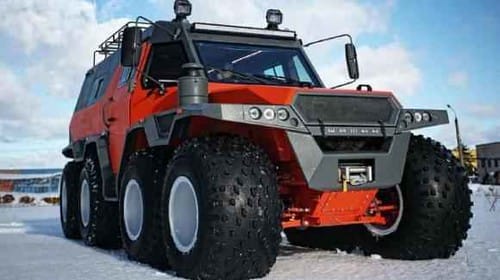
3. **NHTSA Vehicle Weight Classification: Prioritizing Safety Through Mass**In stark contrast to the EPA’s focus on interior volume for cars or GVWR for trucks, the National Highway Traffic Safety Administration (NHTSA) employs a classification system primarily centered on curb weight for its New Car Assessment Program (NCAP) testing. This divergence in methodology highlights the distinct mandates of each agency; while the EPA targets environmental and fuel economy metrics, NHTSA’s core mission revolves around vehicle safety. By grouping cars for NCAP testing based on their mass, NHTSA can assess crashworthiness and occupant protection more accurately within comparable weight categories, providing consumers with vital safety information.
NHTSA’s passenger car classifications are quite granular, starting with mini (PC/Mi) vehicles weighing between 1,500–1,999 lbs. The next tier is passenger cars light (PC/L), covering 2,000–2,499 lbs. Moving up, passenger cars compact (PC/C) are defined as 2,500–2,999 lbs, while passenger cars medium (PC/Me) fall into the 3,000–3,499 lbs range. The heaviest category for passenger cars is PC/H (passenger cars heavy), which includes all vehicles weighing 3,500 lbs and over. These precise weight bands enable NHTSA to conduct fair and relevant crash tests, as vehicle mass is a fundamental factor in collision dynamics and energy transfer.
Beyond passenger cars, NHTSA also includes broader categories for other significant vehicle types in its NCAP program. These include Sport utility vehicles (SUV), Pickup trucks (PU), and Vans (VAN). While the specific weight bands for these larger categories are not explicitly detailed in the same granular fashion as passenger cars, their inclusion emphasizes that NHTSA’s safety assessments extend across the full spectrum of light-duty vehicles available to consumers. The agency’s primary concern here is how these vehicle types perform in various crash scenarios, irrespective of their cargo or passenger capacity, or their environmental footprint.
The emphasis on weight for safety classification underscores a critical aspect of vehicle design and engineering. Heavier vehicles generally offer a protective advantage to their occupants in multi-vehicle collisions, though they can pose a greater risk to lighter vehicles or pedestrians. By standardizing weight classes for testing, NHTSA provides a consistent benchmark for evaluating safety performance. This allows consumers to make informed decisions by comparing vehicles of similar mass, which is a key determinant of crash outcomes. It contributes significantly to the stratification of vehicles in the public consciousness based on perceived and tested safety levels, creating a distinct “class” defined by its inherent crash dynamics.
This system ensures that when consumers look at NCAP star ratings, they are comparing apples to apples within a relevant weight class, even if the EPA might classify the same vehicles differently based on interior volume. The NHTSA’s methodology, therefore, serves as a complementary yet distinct classification framework within the broader American automotive regulatory landscape, focused singularly on enhancing vehicle safety and providing a clear, weight-based measure of a vehicle’s protective capabilities in the event of a crash. It’s a pragmatic division that influences manufacturing priorities and consumer safety perception profoundly.

4. **FHWA 13-Category Classification: Infrastructure and Traffic Management**Developed in the 1980s, the Federal Highway Administration (FHWA) 13-category classification rule set stands as a cornerstone for most federal reporting requirements concerning vehicle types on American roadways. This comprehensive system also serves as the fundamental basis for the majority of state vehicle classification systems, ensuring a degree of uniformity across the nation’s diverse transportation networks. Unlike the EPA’s focus on environmental attributes or NHTSA’s emphasis on safety weight, the FHWA system is primarily concerned with the physical characteristics of vehicles—specifically, their number of axles and their configuration—due to its direct relevance to pavement design, bridge loading, and overall traffic management.
The FHWA system meticulously categorizes vehicles into groups ranging from motorcycles to complex multi-trailer trucks. Class 1, for instance, is dedicated solely to Motorcycles, signifying their unique characteristics and impact on road infrastructure. Class 2 encompasses All passenger cars, a broad category that also includes cars pulling one-axle trailers and even cars with two-axle trailers, indicating a focus on the primary vehicle unit and its towing appendages. This reflects how these vehicles interact with road surfaces and traffic flows. Other two-axle four-tire single-unit vehicles, such as Pick-ups and vans, along with their respective trailers, are grouped under Class 3, acknowledging their common lightweight commercial or utility roles.
Class 4 is designated for Buses, covering both two- and three-axle configurations, highlighting the distinct impact of public transport vehicles on infrastructure. The classification then delves into single-unit trucks based on axle count: Class 5 for Two-axle, six-tire single-unit trucks, Class 6 for Three-axle single-unit trucks (including three-axle tractors without trailers), and Class 7 for Four or more axle single-unit trucks. This progression underscores the increasing weight and structural demands these heavier vehicles place on the road network, necessitating precise categorization for infrastructure planning and maintenance.
The latter categories, Classes 8 through 13, are dedicated to various configurations of single-trailer and multi-trailer trucks, progressively increasing in complexity and axle count. Class 8 covers Four or fewer axle single-trailer trucks, while Class 9 focuses on Five-axle single-trailer trucks, representing the archetypal semi-trailer combination. Classes 10 through 13 then address Six or more axle single-trailer trucks and various Five, Six, and Seven or more axle multi-trailer trucks, respectively. These granular distinctions are critical for understanding freight movement, assessing road wear, and designing robust transportation policies. The system also includes an ‘Unused’ Class 14 and an ‘Unclassified vehicle’ Class 15 for miscellaneous configurations.
The FHWA’s classification system, with its focus on physical attributes like axle count, serves a fundamentally different purpose than those of the EPA or NHTSA. It is a tool for engineers and planners, enabling them to analyze traffic composition, forecast pavement longevity, and manage the logistical demands of goods movement across the country. This system provides a structural “class division” based on how vehicles physically interact with infrastructure. It profoundly influences everything from highway design to the imposition of tolls and weight restrictions, quietly shaping the American driving and freight experience by categorizing vehicles according to their functional impact on public assets.
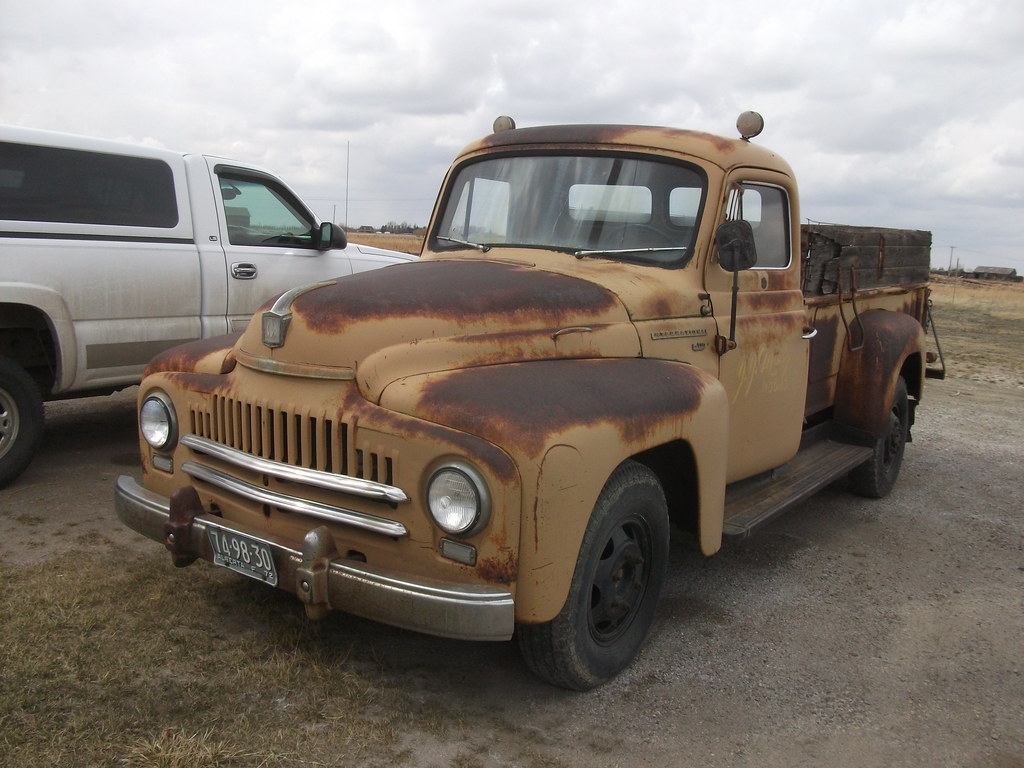
5. **U.S. Census Bureau’s Truck Population Survey Categories: Defining the Utility Vehicle**The U.S. Census Bureau, in its mission to survey the United States truck population, utilizes a classification approach that, while seemingly straightforward, carries significant regulatory implications. For the Bureau, the definition of a “truck” for regulatory purposes is expansive and inclusive, encompassing a wide array of utility vehicles. This broad classification means that all pickups, vans, minivans, and sport utility vehicles are considered trucks, regardless of their underlying construction method—be it unibody or the more traditional body-on-frame design. This departure from conventional passenger car definitions highlights a regulatory mindset focused on function and utility rather than manufacturing specifics.
The Bureau’s survey methodology differentiates between large truck owners, who fall into NHTSA classes 4-13, and small truck owners, primarily consisting of pickups, vans, minivans, and sport utility vehicles, which correspond to NHTSA class 3. This dual-survey approach allows for tailored data collection, recognizing the distinct ownership patterns and usage characteristics of different truck categories. Large truck owners receive a standard, more comprehensive survey, while small truck owners are given a shorter, more focused questionnaire, streamlining the data collection process while ensuring adequate coverage of the entire truck population.
Of particular note in the Census Bureau’s classification is its stance on certain vehicle types that might blur the lines between cars and trucks in common parlance. For instance, Coupe utilities, vehicles that combine a car-like front with an integrated cargo bed, are unequivocally considered pickup trucks in the U.S., not passenger cars. This explicit designation reinforces the regulatory emphasis on the cargo-carrying capability of the vehicle over its car-derived platform. Similarly, SUVs are consistently classified as trucks, despite the emergence of many Crossover Utility Vehicles (CUVs) that possess lower ground clearance and more car-like handling characteristics.
While CUVs might outwardly resemble station wagons or large hatchbacks, for the U.S. Census Bureau and other government agencies, the defining characteristic of an SUV generally overrides platform origins. However, the context does note a subtle caveat: some CUVs with exceptionally low ground clearance *are* considered station wagon or hatchback cars for regulatory purposes. This indicates a nuanced understanding within the regulatory framework, acknowledging that the utility and form factor of a vehicle ultimately determine its classification, even if its nomenclature suggests otherwise. This flexibility ensures that the classification system can adapt to evolving vehicle designs while maintaining regulatory intent.
This broad and functional definition of a truck by the U.S. Census Bureau, in concert with other government agencies, profoundly shapes statistical data collection and regulatory oversight for a significant portion of the American vehicle fleet. By consistently categorizing a wide range of utility vehicles as “trucks,” the Bureau establishes a clear division that impacts everything from emissions standards to safety regulations and taxation. This uniform classification helps to paint a comprehensive picture of vehicle ownership and usage patterns, contributing to a distinct statistical and regulatory ‘class’ of utility vehicles that underpins various governmental policies and economic analyses.

6. **IIHS Passenger Car Size Classes: Safety Through Curb Weight and ‘Shadow’**The Insurance Institute for Highway Safety (IIHS) operates its own highly influential vehicle classification system, distinct from governmental agencies, which is primarily designed to inform its rigorous crash test program. This system is crucial for consumers seeking to understand vehicle safety and is widely utilized by most vehicle insurance companies in the U.S. to assess risk and determine premiums. The IIHS methodology classifies cars not by interior volume or GVWR, but by a combination of curb weight and “shadow” – a unique metric representing the exterior vehicle length multiplied by the exterior vehicle width, essentially quantifying the vehicle’s footprint on the road.
This two-dimensional approach allows the IIHS to group cars into six specific classes: micro, mini, small, midsize, large, and very large. The classification is intricately structured, using curb weight as the primary determinant, but with shadow area acting as a crucial secondary factor, particularly for vehicles on the border between weight classes. For instance, cars weighing 4,000 lbs or more are generally considered midsize, large, or very large, depending on their shadow. A vehicle in this weight bracket with a shadow area of 90-99 sq ft might be classified as ‘large’, while one with 110+ sq ft would be ‘very large’.
The detailed IIHS chart illustrates these nuanced distinctions. Vehicles weighing between 3,500 and 3,999 lbs could be classified as small, midsize, large, or very large, again contingent on their shadow area. Similarly, cars in the 3,000-3,499 lbs range are categorized as small, midsize, or midsize-large. For lighter vehicles, those weighing 2,500-2,999 lbs are typically small or midsize, while the 2,000-2,499 lbs category encompasses mini and small cars. At the very bottom, vehicles weighing less than 2,000 lbs are designated as microcars, acknowledging their minimal size and weight.
The importance of the IIHS classification system cannot be overstated, especially for consumers and the insurance industry. By grouping vehicles by these physical attributes, the IIHS provides a practical framework for comparing the crashworthiness of vehicles that are genuinely similar in terms of mass and footprint. This allows prospective vehicle purchasers to compare models of a comparable size and shape more effectively, fostering informed decisions based on safety performance. The IIHS’s independent classification system, therefore, creates a vital “class division” based on safety profiles, influencing both consumer confidence and the economic realities of vehicle ownership through insurance premiums.
Moreover, the IIHS classifications exert a subtle yet powerful influence on vehicle design. Manufacturers often aim for favorable IIHS ratings, leading to engineering choices that enhance safety within specific size and weight classes. This system, therefore, contributes to a market where safety performance is a key differentiator, and vehicles are implicitly stratified by their protective capabilities. It stands as a testament to how non-governmental organizations can establish influential classification frameworks that significantly impact consumer welfare and industry standards, creating a distinct and widely recognized safety-driven hierarchy among vehicles.

7. **Canadian Vehicle Classification by Natural Resources Canada: A North American Parallel**Canada’s approach to vehicle classification, while tailored to its national context, exhibits a striking resemblance to the systems employed in the United States, particularly concerning passenger cars. Natural Resources Canada, through its Fuel Consumption Guide, publishes classifications that closely mirror those of the U.S. Environmental Protection Agency. This parallel is largely a reflection of the shared automotive market and common vehicle designs between the two North American nations. The Canadian system, much like its American counterpart, utilizes an interior volume index as the primary criterion for segmenting passenger cars, calculated from the combined passenger and trunk or cargo space.
While these classes are not formally defined in Canadian regulations in the same explicit manner as in the U.S., they are widely adopted and understood within the industry and by consumers. The system delineates several categories based on interior size in liters (and cubic feet). It begins with a category for Two-seater vehicles, for which an interior size is undefined, suggesting a focus on specialized, low-capacity vehicles. The classifications then progress in increasing order of interior volume, starting with Subcompact cars, which are defined as having under 2,830 liters (99.9 cubic feet) of interior space.
Moving up the scale, Compact cars are characterized by an interior volume ranging from 2,830–3,115 liters (99.9–110 cubic feet). The Mid-size car segment covers vehicles with 3,115–3,400 liters (110–120 cubic feet) of interior space. Finally, Full-size cars represent the most spacious category, defined as having over 3,400 liters (120 cubic feet) of interior volume. These thresholds, particularly the cubic feet measurements, are noticeably consistent with the EPA’s passenger car classifications, underscoring the deep integration and harmonization of vehicle standards across the North American market. This consistency aids consumers who might cross the border, providing a familiar framework for understanding vehicle size and capability.
The purpose of these classifications in Canada is multifaceted, primarily serving the objectives of the Fuel Consumption Guide. By categorizing cars based on interior volume, Natural Resources Canada provides a standardized means for consumers to compare the fuel efficiency of similarly sized vehicles, aiding in environmentally conscious purchasing decisions. This guide plays a crucial role in public education regarding fuel economy, influencing consumer behavior and, by extension, automotive design trends within the Canadian market. The classifications provide a clear, volume-based “class division” for passenger vehicles, allowing for consistent benchmarking and regulatory application.
Moreover, the fact that most Canadian cars share designs with American cars makes this mirroring of classification systems a practical necessity. It streamlines manufacturing, marketing, and regulatory compliance for automakers operating across both countries. Thus, Canada’s car classification system, while distinct in its administrative origin, functions as a direct parallel to the U.S. EPA framework, providing a coherent and well-understood method for segmenting the passenger vehicle market within a broader North American automotive context. This convergence highlights the interconnectedness of regulatory approaches in a shared economic and geographic space, demonstrating a regional “class” of vehicle definitions.”
While North American regulatory bodies have established robust classification systems tailored to their specific needs, the global automotive landscape presents an even broader tapestry of categorization. Beyond national frameworks, industry-specific codes provide practical, real-world applications for consumers and businesses alike. As we venture further, we uncover how critical industry standards, like the ACRISS code in car rentals, create a universal language, before exploring the diverse and often unique classification models adopted across Europe, Asia, and Oceania, each reflecting distinct cultural, economic, and environmental priorities.

8. **ACRISS Code System: The Global Language of Car Rentals**Ever encountered a four-letter code like ‘IFAR’ when booking a rental car and wondered what cryptic message it conveyed? This is the ACRISS code, a standardized system developed by the Association of Car Rental Industry Systems Standards. Far from being arbitrary, this code is a vital tool, employed globally by most major rental companies to ensure consistency in vehicle categorization across different providers and countries. It acts as a universal shorthand, providing essential information about a vehicle’s key attributes—size, type, transmission, fuel, and air conditioning—quickly and efficiently, thus demystifying the rental process for countless customers worldwide.
The ACRISS code’s power lies in its structured simplicity, with each of its four letters carrying a precise meaning. The first letter denotes the vehicle’s Category, defining its size or class, ranging from ‘M’ for Mini and ‘E’ for Economy to ‘F’ for Full-size, ‘P’ for Premium, and ‘L’ for Luxury, including ‘X’ for Special vehicles. This initial character immediately provides an expectation of the vehicle’s overall spaciousness and market positioning. The second letter specifies the Type or Body Style, differentiating between a ‘B’ for a 2/3 Door vehicle, a ‘C’ for a 2/4 Door, ‘D’ for a 4/5 Door, ‘W’ for a Wagon, ‘V’ for a Van, ‘F’ for an SUV, or even specialized types like ‘T’ for Convertible or ‘J’ for Open Air All Terrain vehicles.
The third letter of the ACRISS code is dedicated to the Transmission and Drive type. Here, ‘M’ typically signifies a Manual transmission with unspecified drive, ‘N’ a Manual 4WD, and ‘C’ a Manual AWD. For automatic vehicles, ‘A’ indicates an Automatic transmission with unspecified drive, ‘B’ an Automatic 4WD, and ‘D’ an Automatic AWD. This clarity is crucial for drivers whose preferences or local driving conditions necessitate a specific transmission or drivetrain. Finally, the fourth letter informs about the Fuel type and the presence of Air Conditioning (AC), with ‘R’ being a common designation for unspecified fuel with AC, ‘D’ for Diesel with AC, ‘H’ for Hybrid with AC, ‘E’ for Electric with AC, and ‘V’ for Petrol with AC, among other specific combinations.
Rental companies rely heavily on these class codes for multiple reasons. They streamline operations by allowing consistent inventory management across diverse locations and seamless integration into booking systems. For customers, these codes provide transparency and confidence, enabling them to compare options between different providers and select a vehicle that precisely matches their budget, passenger count, luggage needs, and driving preferences, without having to decipher vague descriptions. This systematic approach eliminates guesswork, ensuring customers receive the promised specifications defined by the class code.
Finding and interpreting these codes is straightforward. During online booking, the ACRISS code is usually displayed prominently alongside the car’s image and description. It also appears on reservation confirmation emails and rental agreements. Common examples like ‘ECAR’ (Economy, 2/4 Door, Automatic, AC equipped) or ‘IFAR’ (Intermediate, SUV, Automatic, AC equipped) quickly convey core features. Leveraging online resources such as the official ACRISS website or guides from major rental companies further empowers consumers to confidently navigate the rental car market, ensuring they always know exactly what kind of vehicle awaits them.

9. **EEC (Europe) Vehicle Segments: Guiding the European Market**In Europe, vehicle segmentation operates without the formal characterization or explicit regulations that define classifications in North America or Asia. Instead, vehicle segments tend to be based on comparison to well-known brand models, fostering a common understanding within the industry and among consumers. This system relies on a more fluid, comparative approach where a car like the Volkswagen Golf defines a ‘size class,’ and other vehicles are positioned relative to it. For instance, the smaller VW Polo belongs to a segment below the Golf, while the larger Passat occupies a segment above, creating a widely recognized hierarchy.
Despite the absence of formal regulations, the names of these segments have been acknowledged and mentioned in official documents, such as a 1999 EU document titled ‘Case No COMP/M.1406 Hyundai / Kia Regulation (EEC) No 4064/89 Merger Procedure.’ This unofficial yet universally accepted nomenclature provides a practical framework for the European automotive market. The segments encompass a broad range of vehicle types, from the most compact to the most luxurious, catering to diverse consumer preferences and urban landscapes.
The commonly referenced European segments include ‘A: mini cars,’ designed for urban agility and fuel efficiency; ‘B: small cars,’ offering a balance of size and practicality; and ‘C: medium cars,’ often seen as the mainstream family vehicle segment. Moving upwards, ‘D: large cars’ and ‘E: executive cars’ cater to more discerning drivers seeking enhanced comfort and performance. At the pinnacle are ‘F: luxury cars,’ representing the epitome of automotive sophistication. Specialized categories like ‘J: sport utility cars’ (including off-road vehicles), ‘M: Multi purpose cars’ (MPVs), and ‘S: Sports cars’ complete this comprehensive, albeit informal, classification system, reflecting the varied roles vehicles play in European society and contributing to its nuanced market structure.
Car Model Information: 2017 Volkswagen Golf SportWagen TSI SE
Name: Volkswagen Golf
Caption: Volkswagen Golf Mk8
Manufacturer: Volkswagen
Production: 1974–present
Class: Compact car
Predecessor: Volkswagen Beetle
Successor: Volkswagen ID.3
Alt: grey car (hatchback)
Categories: 1980s cars, 1990s cars, 2000s cars, 2010s cars, 2020s cars
Summary: The Volkswagen Golf () is a compact car/small family car (C-segment) produced by the German automotive manufacturer Volkswagen since 1974, marketed worldwide across eight generations, in various body configurations and under various nameplates – including as the Volkswagen Rabbit in the United States and Canada (Mk1 and Mk5), and as the Volkswagen Caribe in Mexico (Mk1).
The original Golf Mk1 was a front-engined, front-wheel drive replacement for the air-cooled, rear-engined, rear-wheel drive Volkswagen Beetle. Historically, the Golf is Volkswagen’s best-selling model and is among the world’s top three best-selling models, with more than 35 million units sold as of 2019.
Initially, most Golfs were hatchbacks, with the three-door version being somewhat more popular than the five-door. Other variants include an estate (Variant, from 1993), convertible (Cabriolet or Cabrio, from 1979), and a Golf-based saloon called the Jetta, Vento (from 1992), or Bora (from 1999). The Golf covers economy to high-performance market segments.
The Golf has won awards, including the World Car of the Year in 2009, with the Mk6 and in 2013 with the Mk7. Along with the Renault Clio and the Vauxhall Astra, the Golf is one of only three cars to have won European Car of the Year twice, in 1992 and 2013. The Golf has made the annual Car and Driver 10Best list multiple times. The Mk7 won the Motor Trend Car of the Year award in 2015, and the Mk1 GTI also won the award in 1985. The Mk4 won for the best-selling car in Europe in 2001.
Get more information about: Volkswagen Golf
Buying a high-performing used car >>>
Brand: Volkswagen Model: Golf
Price: $17,000 Mileage: 59,436 mi.
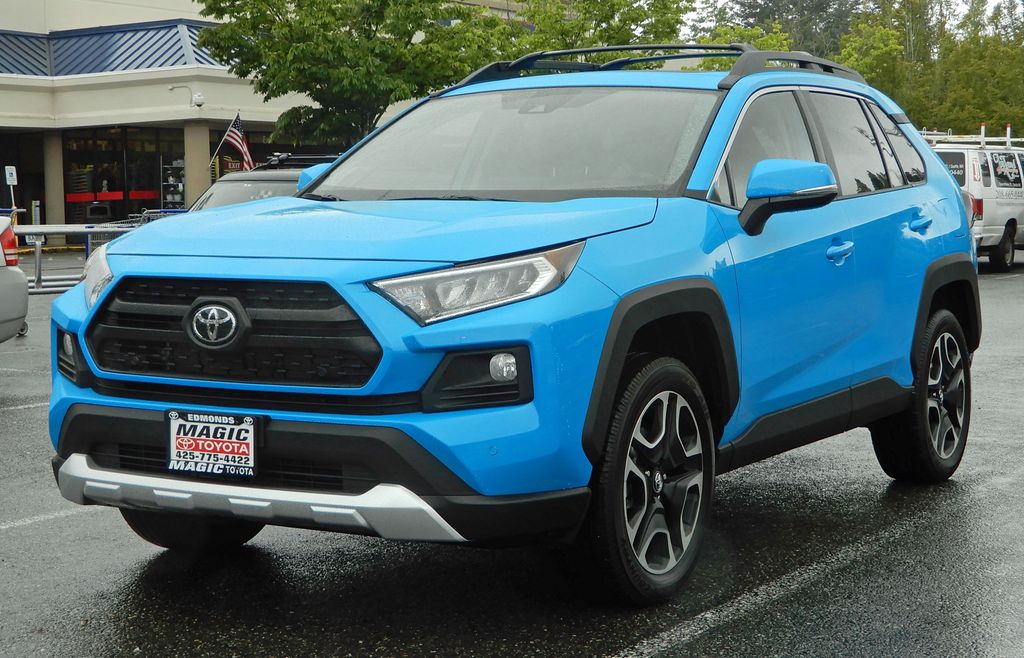
10. **EuroNCAP (Europe) Safety Categories: A Consumer-Focused Approach**Complementing Europe’s informal market segmentation, EuroNCAP (European New Car Assessment Programme) employs its own crucial classification system, designed specifically to inform consumers about vehicle safety. This system is not for registration or taxation but for evaluating crashworthiness, applying a standardized safety test to all new cars. The results are meticulously listed in separate categories, ensuring that prospective vehicle purchasers can make meaningful comparisons between models of a similar size and shape, thereby empowering informed decisions based on safety performance, which is a paramount concern for European buyers.
The EuroNCAP classification delineates distinct categories that closely align with practical vehicle usage and design. These include ‘Small family cars,’ a segment that also notably covers stand-alone saloon superminis like the Dacia Logan, reflecting its adaptability. ‘Large family cars’ encompass a broader range, including compact executive cars, acknowledging the blurring lines between traditional family vehicles and entry-level luxury models. For the more opulent side of the market, ‘Executive cars’ are designated for expensive vehicles exceeding 4.80 meters in length, representing a distinct class focused on premium design and features, alongside comprehensive safety.
Further specialized categories ensure a broad assessment of the European fleet. ‘Roadsters’ are assessed distinctly due to their unique open-top designs. The growing popularity of utility vehicles is addressed through ‘Small off-roaders,’ which are akin to North American crossover SUVs, and ‘Large off-roaders,’ which parallel the more traditional, rugged SUVs found across the Atlantic. Finally, multi-purpose vehicles are categorized into ‘Small MPVs’ (covering both mini and compact MPVs) and ‘Large MPVs,’ recognizing their role as versatile family transporters. This precise categorization by EuroNCAP creates a clear, safety-driven ‘class division’ that significantly influences consumer choices and encourages manufacturers to prioritize robust safety features across all segments.
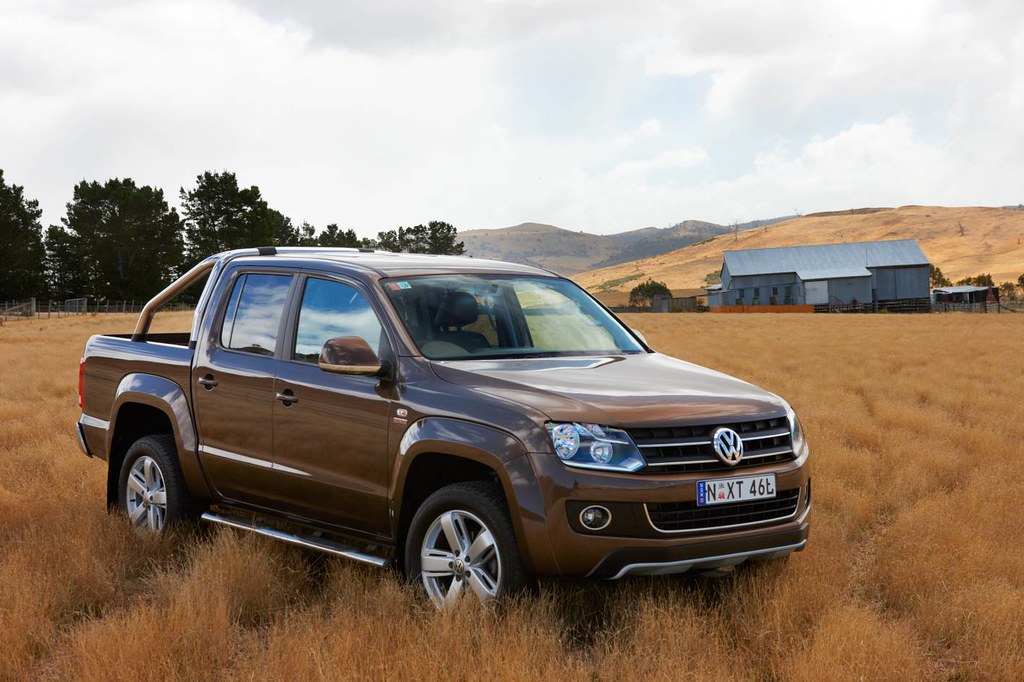
11. **China NCAP Program Categories: Blending Dimensions and Engines**In Asia, vehicle classification models begin to showcase a unique blend of dimensional and engine-based criteria, notably exemplified by China’s NCAP program, as defined by the China Automotive Technology and Research Center (CATARC). While superficially appearing similar to the European system with its ‘A’ and ‘B’ segments, the Chinese application is closer to the Japanese model in its practical enforcement. This framework provides clear guidelines for categorizing passenger vehicles, which directly influence safety assessments and consumer perceptions within the world’s largest automotive market.
The China NCAP program defines ‘Category A (A-segment) vehicles’ primarily by length and engine displacement. These vehicles are characterized as two-box designs (like hatchbacks) between 4 and 4.5 meters in length, or three-box vehicles (sedans with trunks) equipped with engines of less than 1600 cc. This dual criterion ensures that both physical size and powertrain capability contribute to a vehicle’s classification, reflecting an integrated approach to defining market segments that considers both external dimensions and internal engineering.
Progressing upwards, ‘Category B (B-segment) vehicles’ are designated for larger and more powerful automobiles. These are defined as vehicles exceeding 4.5 meters in length and featuring engines with displacements over 1600 cc. This clear demarcation creates a significant ‘class division’ based on both scale and performance, influencing consumer expectations for space, power, and, by extension, prestige. The classification system also includes broader categories for ‘Multi-purpose vehicles’ (MPVs) and ‘Sport utility vehicles’ (SUVs), acknowledging their distinct market roles and ensuring comprehensive safety evaluation across popular utility segments in China’s rapidly evolving automotive landscape.
Read more about: Unpacking the ‘M’: A Deep Dive into BMW’s Motorsport Heritage and Ultimate Driving Machines

12. **SIAM (India) Car Segments: Length as the Primary Divider**India’s approach to passenger vehicle classification, as orchestrated by the Society of Indian Automobile Manufacturers (SIAM), stands out for its straightforward methodology. Unlike systems that juggle interior volume, GVWR, or engine displacement, SIAM divides Indian passenger vehicles into segments A1 through A6, B1, B2, and a broad SUV category, based solely on the length of the vehicle. This single, easily measurable criterion provides a clear and unambiguous framework for the Indian market, which is characterized by diverse consumer needs and often constrained road conditions.
The detailed breakdown of SIAM segments reveals a granular classification based on millimeter increments. ‘A1’ encompasses ‘Ultracompact cars’ up to 3,400 mm in length, exemplified by models like the Suzuki Alto and Tata Nano, catering to the most budget-conscious and urban-centric buyers. Progressing to ‘A2’ for vehicles from 3,401 to 4,000 mm, this ‘Sub-four metre’ segment is immensely popular, featuring models like the Maruti Suzuki Wagon R and Hyundai i10, offering a balance of space and affordability. ‘A3’ defines ‘Entry-level mid-size sedans’ (4,001 to 4,500 mm), while ‘A4’ extends to ‘Small family cars’ (4,501 to 4,700 mm), exemplified by the Toyota Corolla.
The upper echelons of passenger cars are categorized by further length bands. ‘A5’ covers ‘Mid-size (D) and Executive cars (E)’ ranging from 4,701 to 5,000 mm, including vehicles like the Toyota Camry and Mercedes-Benz E-Class, signifying increasing luxury and space. ‘A6’ is reserved for ‘Grand saloons (F)’ exceeding 5,000 mm, such as the Mercedes-Benz S-Class, representing the pinnacle of automotive extravagance. For utility vehicles, ‘B1’ classifies ‘Small vans’ under 4,001 mm, and ‘B2’ covers ‘Mid-size MPVs/minivans’ over 4,000 mm. Finally, ‘SUV’ is a comprehensive category for ‘Any SUVs,’ irrespective of their specific dimensions, providing a distinct ‘class division’ that directly influences purchasing patterns and regulatory incentives based on the crucial metric of vehicle length in the Indian market.
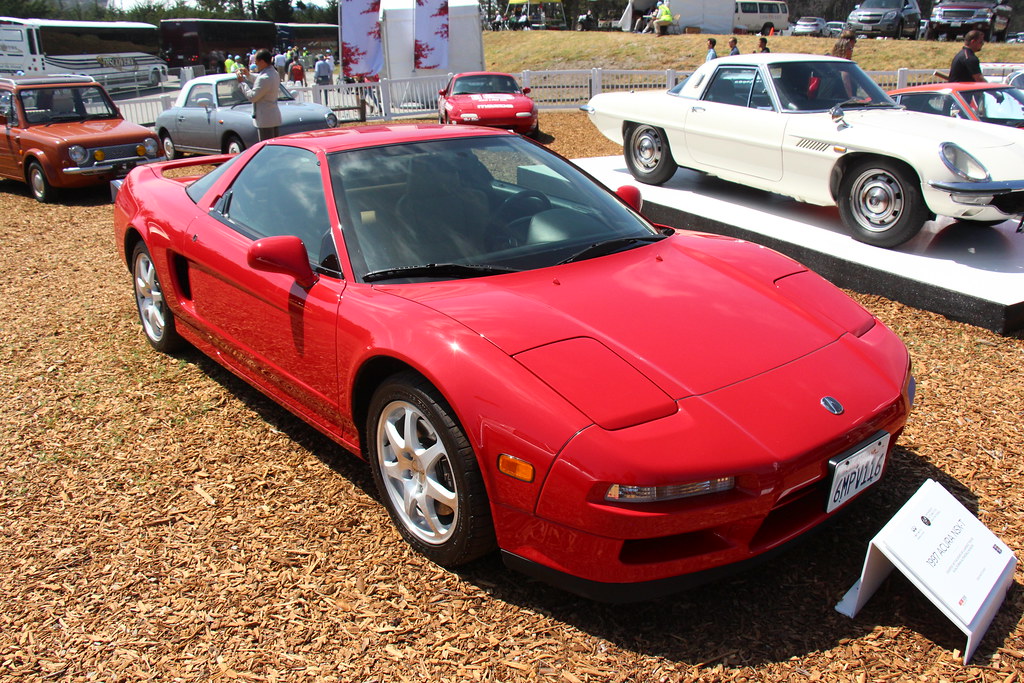
13. **Japan Vehicle Classifications: Tailoring to National Realities**Japan’s vehicle classification system, established under the Japanese Government’s Road Vehicle Act of 1951, offers a refreshingly simple yet rigorously enforced framework, distinct from many global models. Characterized by precise measurements for dimensions and engine displacement, it directly reflects Japan’s unique driving conditions—confined spaces, specific speed limits, and a pronounced emphasis on smaller, efficient vehicles. This classification system is uniformly applied to all vehicles, irrespective of their origin of manufacture, regulating all autonomously powered road vehicles not traveling on railroads or connected to overhead power lines.
At the core of the Japanese system are ‘Keijidosha,’ or light cars, affectionately known as ‘Kei cars.’ Buyers of these diminutive vehicles enjoy significant tax, registration, and other benefits, making them incredibly popular. Regulations have evolved to allow for slightly larger and more powerful Kei cars, maintaining demand while improving collision protection. Currently, a Kei car must be less than 3.4 meters long, 1.48 meters wide, and 2 meters high, with a maximum engine displacement of 660 cc and a maximum power of 64 PS. Even smaller microcars with engines no larger than 49 cc exist, identified by light blue license plates, highlighting a detailed stratification based on size and utility.
Moving up, ‘Small size Passenger vehicles,’ commonly referred to as ‘5 number’ vehicles due to their license-plate prefix, represent the next class. These are limited to vehicles less than 4.7 meters long, 1.7 meters wide, 2 meters high, and with engine displacement at or under 2,000 cc. This class, which includes vans, trucks, and station wagons (classified as commercial vehicles and receiving a ‘4 number’ prefix), remains exceptionally popular. Historically, the annual tax rate for larger vehicles was significantly higher, spurring Japanese manufacturers to continuously improve compact-sized products to maximize interior accommodation within these strict exterior boundaries.
The ‘Normal-size passenger vehicles,’ or ‘3 number’ vehicles, encompass those exceeding the ‘small size’ limits—longer than 4.7 meters, wider than 1.7 meters, higher than 2 meters, or with engine displacement greater than 2,000 cc. This class also includes a mandate that private passenger vehicles may not exceed 6 meters in length or 2 meters in width. Interestingly, market conditions in the past led manufacturers like Honda and Mitsubishi to produce certain models in both ‘compact size’ versions for the Japanese market and larger ‘passenger size’ variants primarily for export, illustrating the direct impact of these regulations on vehicle design.
Beyond cars, motorcycles also have precise classifications based on engine size, ranging from ‘Class I moped’ (up to 50 cc) to ‘Motorcycle large’ (over 400 cc), each identified by specific license plate colors and text. All vehicles with an engine displacement over 250 cc are subject to a mandatory inspection (‘Shaken’), where vehicle weight tax and insurance are typically paid, separate from the yearly road tax. This comprehensive, size- and engine-based system creates a distinct ‘class division’ that profoundly shapes the Japanese automotive market, influencing everything from vehicle design to consumer behavior and taxation.

14. **Australia SUV Classifications: Defining Utility Down Under**As we traverse the globe, Australia offers yet another distinct classification lens, particularly for its burgeoning Sport Utility Vehicle (SUV) market. Unlike some regions that rely on internal volume or engine size, Australia’s SUV classification is primarily based on a unique metric: the vehicle’s exterior footprint on the road. This is meticulously calculated by multiplying the exterior vehicle length (excluding any rear-mounted spare wheel/tyre) by the exterior vehicle width (excluding mirrors), both measured in millimeters. This ‘shadow’ metric provides a clear and tangible measure of a vehicle’s physical presence, which is crucial for urban maneuverability and environmental impact considerations.
This practical classification system divides SUVs into four main size categories. The ‘Small/Light SUV’ segment encompasses vehicles with a footprint of less than 8.1 square meters (87 sq ft), catering to urban dwellers seeking compact utility. Moving upwards, ‘Medium SUV’ includes vehicles with a footprint ranging from 8.1 to 8.8 square meters (87 to 95 sq ft), representing a popular choice for families needing more space without venturing into overly large dimensions. These classifications help consumers understand the practical differences between models that might otherwise be broadly labeled as ‘SUVs.’
The larger end of the spectrum is defined by ‘Large SUV’ vehicles, which exhibit a footprint between 8.8 and 9.8 square meters (95 to 105 sq ft), offering substantial passenger and cargo capacity. Finally, the ‘Upper/Extra large SUV’ category is reserved for the biggest vehicles, those exceeding 9.8 square meters (105 sq ft). This systematic approach, with its emphasis on a quantifiable ‘shadow’ area, provides a clear ‘class division’ among SUVs in Australia, allowing for precise market segmentation. It aids consumers in making informed decisions about vehicle size in relation to their needs and local infrastructure, ensuring that the diverse array of SUVs available Down Under is organized into easily understandable and functionally relevant categories.
From the granular detail of engine displacement and length in Asia to the sophisticated footprint calculations in Oceania, the journey through global vehicle classification models reveals a fascinating diversity of approaches. Each system, whether official or informal, serves to bring order to the vast automotive world, defining distinct vehicle ‘classes’ that reflect the unique regulatory, economic, and cultural landscapes of their respective regions. These classifications are not merely bureaucratic constructs; they are fundamental descriptors that shape consumer choices, influence automotive design, and underpin the intricate tapestry of transportation worldwide, proving that even seemingly technical codes contribute to the nuanced story of mobility on a global scale.


